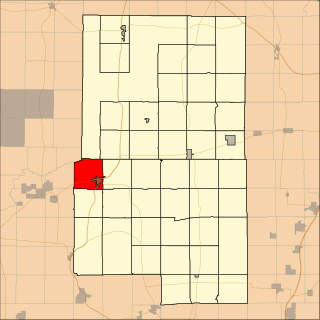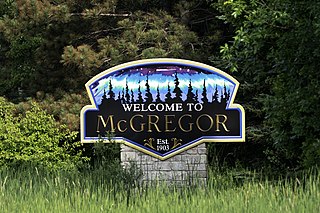
Aitkin Township is a township in Aitkin County, Minnesota, United States. The population was 918 as of the 2020 census. The 2021 population estimate is 934.
Cornish Township is a township in Aitkin County, Minnesota, United States. The population was 28 as of the 2010 census.
Jevne Township is a township in Aitkin County, Minnesota, United States. The population was 322 as of the 2010 census.
Kimberly Township is a township in Aitkin County, Minnesota, United States. The population was 195 as of the 2010 census.
Lakeside Township is a township in Aitkin County, Minnesota, United States. The population was 463 as of the 2010 census.
Lee Township is a township in Aitkin County, Minnesota, United States. The population was 50 as of the 2010 census.

Libby Township is a township in Aitkin County, Minnesota, United States. The population was 45 as of the 2010 census.
Logan Township is a township in Aitkin County, Minnesota, United States. The population was 184 as of the 2010 census.

McGregor is a city in Aitkin County, Minnesota, United States. The population was 391 at the 2010 census. McGregor is along Minnesota State Highways 65 and 210. Other routes include Aitkin County Road 8.

Millward Township is a township in Aitkin County, Minnesota, United States. The population was 72 as of the 2010 census.

Palisade is a city in Aitkin County, Minnesota, United States. The population was 162 at the 2020 census. The Mississippi River flows through the area.
Pliny Township is a township in Aitkin County, Minnesota, United States. The population was 109 as of the 2010 census.
Rice River Township is a township in Aitkin County, Minnesota, United States. The population was 136 as of the 2010 census.
Spencer Township is a township in Aitkin County, Minnesota, United States. The population was 518 as of the 2010 census.
Wagner Township is a township in Aitkin County, Minnesota, United States. The population was 332 as of the 2010 census.
Williams Township is a township in Aitkin County, Minnesota, United States. The population was 144 as of the 2010 census.
Workman Township is a township in Aitkin County, Minnesota, United States. The population was 207 as of the 2010 census.
Lakeview Township is a township in Carlton County, Minnesota, United States. The population was 194 as of the 2000 census. Lakeview Township was so named by early settlers from their scenic views over Tamarack Lake and other lakes.
Split Rock Township is a township in Carlton County, Minnesota, United States. The population was 124 at the 2000 census. Split Rock Township took its name from the Split Rock River.
Prairie Lake Township is a township in Saint Louis County, Minnesota, United States. The population was 50 at the 2010 census.








